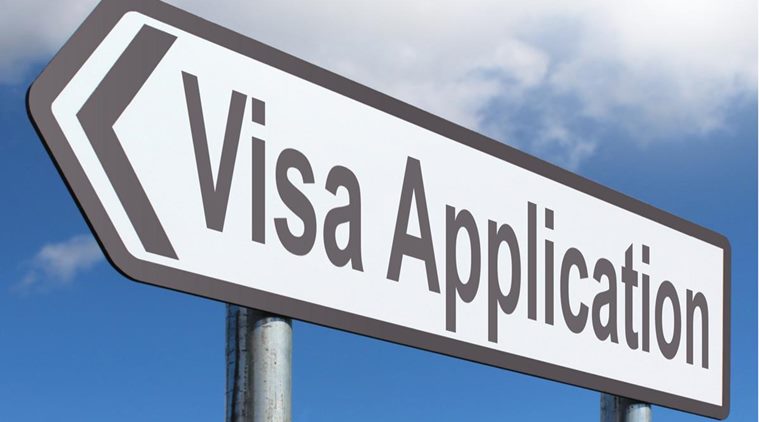
Tom McCall Waterfront Park Travel
Tom Mccall Waterfront Park: Once the site of a freeway, this downtown riverfront park is a popular place for jogging, in-line skating, and cooling off in Salmon Street Springs, a fountain whose water patterns change with the city’s mood. The park bears the name of former Oregon Governor Tom McCall, a staunch advocate of recycling, environmental preservation, and urban planning. This 1.5-mile (2.4-kilometer) stretch of green along the Willamette River is home to many annual events, including the Portland Rose Festival, the Oregon Brewers Festival, and the Waterfront Blues Festival. The Japanese American Historical Plaza is located at the north end of the park.
The Founders Stone honors Portland’s founders, William Pettygrove and Asa Lovejoy, who tossed a coin to decide whether their new town would be named Boston or Portland.

Salmon Street Springs was dedicated in 1988, although it wasn’t named until a contest was held in 1989. Designed by Robert Perron Landscape Architects and Planners, the fountain is controlled by an underground computer that changes the pattern of the fountain’s 185 water jets. The three cycles of the fountain are called misters, bollards, and wedding cake. At full capacity, the fountain recycles 4,924 gallons of water per minute through as many as 137 jets at once.
Tom Mccall Waterfront Park Events
Governor Tom McCall Waterfront Park is a 36.59 acre (148,100 m2) park located in downtown Portland, Oregon, along the Willamette River. After the 1974 removal of Harbor Drive (a good example of freeway removal), the park was opened to the public in 1978. The park is owned by the City of Portland (Portland Parks and Recreation). The park was renamed in 1984 to honor Tom McCall, the Oregon governor who pledged his support for the beautification of the west bank of the Willamette River—harkening back to the City Beautiful plans at the turn of the century that envisioned parks and greenways along the river. The park is bordered by RiverPlace to the south, the Steel Bridge to the north, Naito Parkway to the west, and Willamette River to the east.
In October 2012, Waterfront Park was voted one of America’s ten greatest public spaces by the American Planning Association. The most common uses for the park are jogging, walking, biking, skateboarding, fountain play, lunching, basketball, fireworks viewing, and boat watching. Due to its recreational use, lunch hours (11:00 am to 1:00 pm) are peak-use hours for the waterfront park. In addition to recreational use, the park is also highly used by bike and pedestrian commuters during rush hours (3:00 pm to 5:00 pm) because the park is easily accessible to the downtown Portland workforce and provides a pleasant, off-street thoroughfare away from vehicular traffic. It is currently home to the Waterfront Blues Festival, Oregon Brewers Festival, Gay/Lesbian Pride Festival, and The Bite of Oregon Festival. The park is also the host of many Rose Festival events.
Tom Mccall Waterfront Park Portland

On August 3, 1990, the Japanese American Historical Plaza was dedicated to the memory of those who were deported to inland internment camps during World War II. In the memorial garden, the artwork tells the story of the Japanese people in the Northwest – of immigration, elderly immigrants, native-born Japanese Americans, soldiers who fought in US military services during the war, and the business people who worked hard and had hope for the children of the future. A sculpture by Jim Gion, Songs of Innocence, Songs of Experience, serves as a gateway to the plaza.
A non-profit organization, the Oregon Nikkei Endowment, fueled the commemoration with help from PP&R, Metropolitan Arts Commission, Portland Development Commission, and the Portland-Sapporo Sister City Association. Designed by award-winning landscape architect Robert Murase, the plaza is 70 feet wide at its narrowest, 200 feet at its widest. It extends between NW Davis & Naito Parkway (formerly Front Ave) and the Willamette River esplanade for about 300 feet northward from the Burnside Bridge. One hundred ornamental cherry trees link the plaza northward to the Friendship Circle, a collaboration by sculptor Lee Kelly and composer Michael Stirling. From a wide concrete circle rise a pair of 20-foot stainless towers from which emanates music based upon traditional and contemporary Japanese instruments. The sculpture commemorates 30 years of the Sister City relationship between Sapporo, Japan, and Portland.
In 1993, the Police Memorial, located at SW Jefferson near the Hawthorne Bridge, was dedicated to Portland police officers who had given their lives in the performance of their official duties.
Hotels Near Tom Mccall Waterfront Park
Named for a former Oregonian governor, this 30-acre park stretches alongside the Willamette River in downtown Portland and provides some of the best views of the city’s skyline. Because of its prime location, it hosts many of Portland’s special events – including the ever-popular Oregon Brewers Festival and the Portland Rose Festival.
But even when the city isn’t celebrating, there’s plenty to do here. Locals congregate for afternoon strolls or picnics and families cool off on hot days at the Salmon Street Springs fountain. The park is also home to some historic monuments like the Founders Stone, Japanese American Historical Plaza, and the Police Memorial. The Portland Saturday Market is held within the park every weekend from March to Christmas Eve. If you’re in need of a bite to eat, head to Pine Street Market – a food hall with that sits at the northern end of the park on at Second Avenue and Pine Street.
Visitors to the park say it’s a perfect place to relax on a sunny day, though they also note that among the crowds of joggers and bicyclists, there is also a healthy amount of homeless that congregate here.
The park is free to enjoy and is open every day from 5 a.m. to midnight. There are several MAX Blue and Red line stations within walking distance of the park. For more information on what to do here, check out the Portland Parks & Recreation website.
Tom Mccall Waterfront Park Portland
- Olmsted Report (1903) and Bennett Plan (1912) emphasize the need for an urban greenway to preserve the Willamette riverfront
- Thirty-two foot high, $2.7 million seawalls built along the river to stem flooding (1929)
- Construction of the 1943 Harbor Drive Freeway restricted pedestrian access to the riverfront
- Oregon State Highway Department proposed Harbor Drive expansion; Oregon Governor Tom McCall halted expansion and called for a waterfront park (1968)
- Harbor Drive permanently closed in 1974; architecture firm Wolff Zimmer Gunsul Frasca drafts $20 million Downtown Waterfront Park Master Plan (1975)
- After the 1978 park opening, a 1982 management study implemented changes to oversee booming park usage
- Park renamed for Oregon Governor Tom McCall (1984)
- Master Plan updated in 2003; 15- to 20-year plan includes expansion of Saturday Market hardscape and landscape improvements
Design features
- Architect Robert Perron’s Salmon Street Springs (1988) and Bill Naito Legacy Fountain (2009), named for Portland civic leader, provide interactive waterworks
- Tree-lined Central Lawn provides open space for events hosting, such as July Waterfront Blues Festival and Portland Brewers Festival
- Sculptor Lee Kelly’s Friendship Circle features two 20-foot steel towers protruding from the base, playing electronic music by composer Michael Stirling
- Founder’s Stone, honoring Portland founders William Pettygrove and Asa Lovejoy, provides historical context for all of downtown Portland
- Architect Robert Murase’s Japanese–American Historical Plaza features Japanese art and sculptor Jim Gion’s Songs of Innocence, Songs of Experience
Citizen engagement
- Downtown Plan Citizen Advisory Committee, composed of 18 private citizens, propose the creation of tax increment-funded Waterfront Urban Renewal District (1972)
- Riverfront for People, founded by Allison and Bob Belcher and Jim Howell in 1969, has fought for public access to the Willamette River waterfront for more than 40 years
- Citizen-based research organization Portland City Club conducts civic salons and publishes reports, including a 1969 analysis calling for the creation of a waterfront park
- Waterfront Park Master Plan updated from 2000-2003 through citizen workshops, surveys, and public meetings with attendance averaging 500 people
Governor Tom Mccall Waterfront Park
The idea for this park came at the turn of the century when the 1903 Olmsted Report pointed out the need not only for parks within the city but for a greenway scheme for the riverbanks in order to ensure their preservation for future generations. The 1912 Bennett Plan again showed a need for more parks and river greenways, but instead of reorienting itself to the river, the city’s focus was pulled further inland. In the late 1920s, the seawall was built along the Willamette’s west bank for the protection of downtown from the annual floods. The seawall not only cut off the water from the people but the people from the water as well. The construction of Harbor Drive along the west bank in the 1940s continued the trend of isolating the public from the river.
With the opening of the Eastbank Freeway (Marquam Bridge, I-5), Harbor Drive became less important to the traffic flow of the city. Governor Tom McCall created the Harbor Drive Task Force in 1968 in order to study proposals for creating a public open space in its place. In 1974, Harbor Drive was torn up and construction of a waterfront park began. It was completed and dedicated in 1978, gaining instant popularity. In 1984, the park was renamed Governor Tom McCall Waterfront Park.
Tom Mccall Waterfront Park Parking
More than just a green corridor through the city, the park’s design includes a diverse range of features, from the Battleship Oregon memorial to 100 cherry blossom trees surrounding the Japanese–American Historical Plaza. In addition to attracting hundreds of daily users for recreation and relaxation, events like the quirky Saturday Market and June Rose Festival bring nearly one million people to the park each year.
Recommendations for the future of the park were developed during a master plan update completed in 2003. The 30-month process generated a 20-year strategic plan that focuses on accommodating increased recreational activity along the riverfront. Several features of the master plan, including an interactive water play area that became a reality in the Bill Naito Legacy Fountain, have been implemented.
New development inspired by and located next to the park includes RiverPlace. The first phase, finished in 1985, included a marina, condominiums, a hotel, restaurants, and an office building. Later phases followed, adding townhouse units, an athletic club, and retail and restaurant space.
